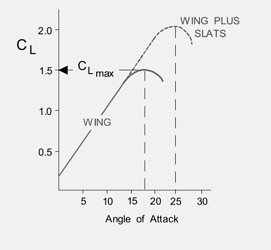I agree with that. I’m just concerned that when they do decide to fix this they’ll forget about the “stall at any speed” bit 
They can’t ‘forget’ it since all flight sim correctly simulate the stall when exceeding the critical AoA, which has basically nothing to do with speed.
I wouldn’t put it past them…
Agree.
Regarding flight controls I think they should choose between either of the approaches as described below and not a mix of the two methods as we are seeing in the sim right now:
-
The control inputs given are directly related to the control surface deflection, joystick full back is elevator full up, period.
-
The joystick inputs are a force input rather than a direct flight control input. In other words pulling the joystick full back represents the maximum force an average person is able to exert on the controls, for example 400 N.
In the second case, at zero speed the control surface deflection is directly related to joystick position as there is no stick force, at higher speed the maximum control surface deflection and rate of deflection is reduced due to increased stickforce. This is kind of what they are doing already, but they need to improve as it is now totally impossible to pull the aircraft into any kind of accelerated stall or maintain altitude during steep turn etc.
Also the in-sim yoke or stick in this case should represent control surface position, instead of mimicking your joystick. For example, pulling the stick full back at high speed, the in-sim yoke would not move full back initially and progressively moves further back as speed decreases and subsequent decrease in stickforce makes it possible to pull the yoke further back until reaching full deflection at a some point.
Added benefit would be that trim could be accurately simulated this way. The way it is coded now the trim on a conventional aircraft works kind of like a moveable stabilizer as the in-sim yoke and elevator themselves do not move when trimming. In real life, if the yoke would stay where it is (e.g. stuck elevator) the trim tab would start to act as a tiny elevator but instead would work in reverse! The way trim is simulated in MSFS (and most other sims) would therefore never work in real life.
It also looks very non-intuitive if you would for example fly the Cessna using only pitch-trim (keep joystick centered), cut the power, reduce speed to stall speed while maintaining altitude with trim (trim nose-up). If you now switch to external view and take a look at the elevator you would find the elevator is centered and only the trim tab is deflected, also in the cockpit the joke is centered, in real life you would have the yoke in your stomach at this point.
If you consider the joystick input as being a force exerted on the flight controls and “disconnect” the relationship between joystick position and control surface position (in-sim yoke position). I think you could actually simulate the trim as it works in real life. For example, when trimming nose-up using this philosophy you would find the in-sim joke moving aft and you’ll need to push forward on the joystick to keep the elevator centered and therefore keep maintaining altitude. Trimming full nose-up you’ll potentially need full down input on your joystick to even out the force created by the trim tab and keep the in-sim joke (and therefore elevator) centered.
Asobo is using the above technique already (although implemented very poorly) to simulate increase of stickforce with increasing airspeed. They should implement either a force based or direct approach instead of the weird hybride half-baked approach they have chosen to use right now. I think considering the joystick input as a force exerted on the flight controls is the way to go, otherwise it is very easy at home without feeling g-forces or increase in stickforce with increase in airspeed to overstress the aircraft and would not solve the issue of sensitive and “twitchy” controls.
I have noticed that during low speed, high angle of attack, and odd COG flights that the plane is oddly stable and that during a partial or 1 wing stall the plane doesnt actually stall, not fully at least. I would like a more true to life physics for low speed, or high AOA stalls so that I can properly use the more aerobatic planes in this game. Furthermore I noticed that in higher speeds the game would rather break your plane than stall out, which is fine for a Cub but for the 3rd party Eurofighter it gets in the way of the maneuverability.
Long story short I would like a less forgiving, more rue to life stall model
I don’t understand this part, a wing stalls at the same AOA, how can there be “high AOA stalls”?
Semantics perhaps, but leading-edge slats increase the critical AoA of a wing:
However I don’t understand the relevance to aerobatics.
Do you perhaps mean stalling with a high nose attitude? I.e. when using power/slip-stream to delay the stall?
Except in FSX and MSFS ![]()
Obviously yes, high lift devices alter the critical AOA.
There might be some work underway to revamp the input system.
I’m not holding my breath on what is being implemented and how but I am cautiously optimistic.
Fixed in Sim Update 4.
